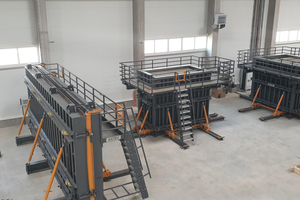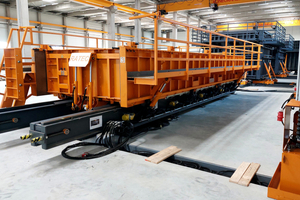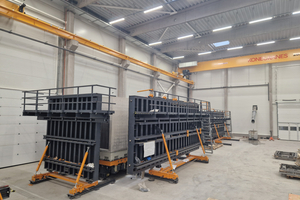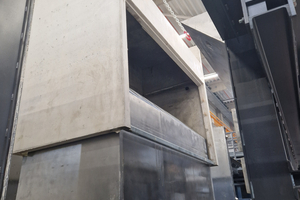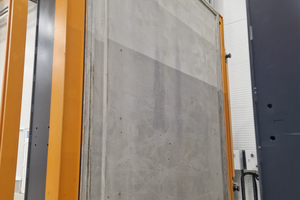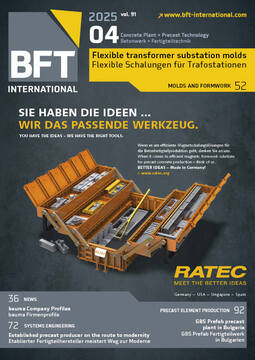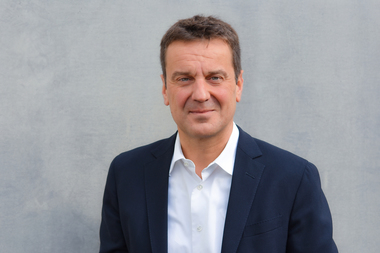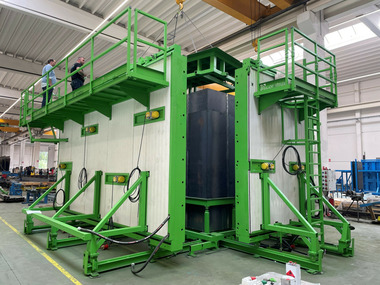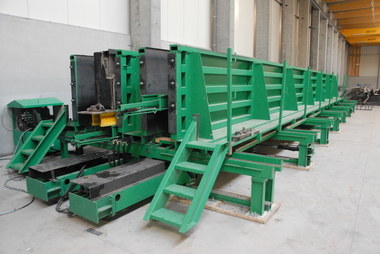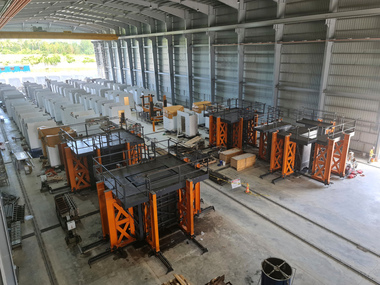Flexible transformer substation molds in demand in Germany and Europe
Ratec is considered a pioneer in the field of magnetic formwork and has also attracted attention with innovative 3D mold solutions over the past 15 years. Since 2018, Ratec has already installed over 20 adjustable substation molds, 3 variable molds for cable basements and over 20 roof molds.
Ratec is considered a pioneer in the field of magnetic formwork and has also attracted attention with innovative 3D mold solutions over the past 15 years. Since 2018, Ratec has already installed over 20 adjustable substation molds, 3 variable molds for cable basements and over 20 roof mulds - both horizontal and vertical. With the extensive experience gained from past projects, Ratec has significantly expanded its expertise in this field and at the same time expanded its team in design, production and assembly.
Transformer stations are subject to high technical requirements. Customers also demand a variety of options and flexibility for mold solutions. Ratec meets these challenges with modular and adaptable formwork solutions that enable efficient utilisation of production space. Right from the planning phase, Ratec works closely with customers to optimise the implementation of specific requirements and production targets. Molds are designed to facilitate workflows, relieve the burden on plant personnel and ensure a consistently high quality of elements. The robust design and high-quality workmanship ensure that the formwork has a long service life.
A look at recent projects highlights why Ratec’s formwork solutions are popular among manufacturers worldwide.
New production plant in Central Europe equipped
In 2024, several molds were installed for a new plant in Hungary, including modular molds for substations, roof molds and a mold for cable basements.
The project included a total of four modular molds. Molds 1 and 2 cover different lengths and widths, while Molds 3 and 4 are designed for maximum flexibility. Both models allow for length adjustments in 20-centimetre increments from 3 to 8 m. Mold 3 has a fixed width of 2.5 m and a height of 2.6 m, whereas Mold 4 features a width of 2.9 m and two height options of 2.6 m and 3 m. The adjustability of the molds was tailored to align with the customer’s element programme.
Variable basement mold
The length of the mold can be adjusted in 20 cm increments from 2.95 m to 7.95 m, with two widths according to the elements from molds 3 and 4, and a fixed height of 0.90 m. It consists of a fixed and a movable base end core and various core segments in lengths of 100, 200, 300, 400 and 800 mm, which can be flexibly combined to cover the various lengths. Widening segments are also available for the second width. The core segments are moved hydraulically on a base frame for reconfiguration. The outer panels are raised and lowered hydraulically for molding and demolding.
Over 1,000 different variants can be produced
Molds 3 and 4 as well as the basement mold each cover 26 lengths, the basement mold an additional two widths. Mold 4 can also produce two different element heights. For the molding of interior walls, the requirement was that there should be eight possible variants for interior walls, six of them in a fixed position and two that can be freely positioned along the length in a 10 cm grid. This required a very compact and well thought-out design solution. For molds 3 and 4, this results in more than 1,000 different variants of concrete bodies that can be produced in one mold. Various recesses are also available for doors, which can also be freely varied and positioned, adding to the diversity of the variants.
Vertical roof mold
The dimensions of the roof molds were planned to match the room module mold, i.e. 1 roof mold for 2 lengths with a fixed height, 1 roof mold for 2 heights with a fixed length and 2 roof molds with adjustable length in 20 cm increments from 3.20 to 8.40 m - corresponding to the different variants of molds 3 and 4.
The roofs were to be produced vertically in a space-saving manner, so the knowledge gained from the development of battery molds had to be incorporated in the design. They were designed as battery molds with one pocket each, consisting of a fixed panel for the top of the roof and a sliding panel for the underside of the roof.
A floor formwork, a magnetic side formwork and a swivelling side formwork form the boundary of the formwork surface. For the different element sizes (roof lengths), formwork kits are available in different versions (corresponding to the element length). A screw-on side support serves as a fixed point. A magnetic side formwork is placed on the other side according to the length of the element.
Supplementary equipment
The molds are supplemented by other equipment, including a 180° turning station with a capacity of 30 tonnes, suitable for all elements and basements, a hydraulic tilting table and high-frequency vibrators for concrete compaction for all molds. In total, it was the largest overall project to date for the Hockenheim-based company in this product segment.
Germany: Other adjustable molds for transformer stations
For some elements, there are increased requirements in terms of wall thickness for fire protection reasons. A solution was also developed for this case to extend the length and width by 26 mm on each side. To do this, a few steps are carried out on the floor formwork, the panels, the door recesses and, if necessary, the add-on formwork, and the wall thicknesses are increased with just a few components.
Another new development is designed to improve thermal insulation during heating. In this mold variant, sandwich panels are attached to the outer panels with a circumferential steel edging. This measure is intended to accelerate curing and increase the utilisation of the mold.
Prospects: adjustable 3D molds with shrink core
Several projects for 3D molds are currently under development, including an elevator shaft mold with a shrink core that is variable in length and width from 1,110 to 2,750 mm. A similar flexible solution with a shrink core is currently being developed in Asia, where a mold for so-called household shelters is being created. Like elevator shafts, these household shelters are also 4-sided concrete elements that are installed in residential buildings in Singapore in accordance with the usual building standards there. This type of room module is characterised by a higher weight, due to the greater wall thicknesses of between 250-300 mm, as well as complex connection details for anchoring in the buildings.
Conclusions
Ratec molds and formwork systems can set standards in precast concrete element production - especially for demanding projects such as transformer substations. Precision, efficiency, sustainability and flexibility make these systems a very suitable solution for manufacturers who prioritise quality and cost-effectiveness.
Ratec will be presenting these and other solutions and projects at bauma Munich from 7 to 13 April 2025 – to be found in hall B1 booth 348.

